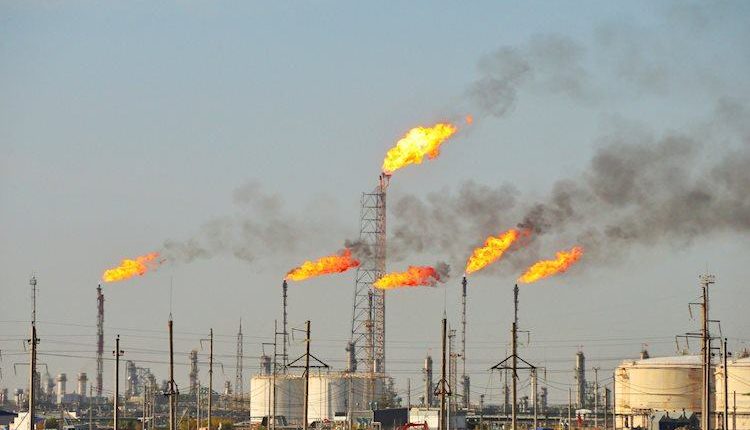- Natural Gas broke above $3 in early Friday trading, turns red near the US opening session.
- The US Dollar trades in the green for this week, though sees nearly all weekly gains being erased as this Friday continous.
- US Natural Gas prices could shoot higher to $3.40 despite less demand from Europe.
Natural Gas prices are sliding lower by over 1% this Friday pointing to a mild start for October with initial demand for gas from households to be delayed towards mid-October, triggering a slight drop in demand. Traders sent the gas prices soaring as the EU will need to scramble to get those last cubic feets of gas in order to have the strategic reserves filled to the brim ahead of fall and winter. Expect to possibly see some more price increases to come should more negative headlines on supply hit the wires.
The US Dollar (USD) is trying to eke out another weekly gain, though this might be a close call to the final minute. While the US Dollar Index has closed each week near the high of that same week over the past ten weeks, that does not look to be the case for this week. With the United Auto Workers (UAW) union strike continuing, more independent workers joining the picket lines, and a US federal government shutdown expected to start this weekend, things are starting to look grim for the Greenback.
Natural Gas is trading at $3.02 per MMBtu at the time of writing.
Natural Gas news and market movers
- Asian LNG spot price hits a 7-month high on rising local demand and possible lingering supply issues towards Europe.
- Weather reports show a mild start of October with most parts of Europe in no need of cranking up the home heaters. This already helps offset the current diminished gas inflow from Norway to Europe.
- European gas markets remain tight with the slightest disruption or reopening of a gas field triggering a price move. This sensitive environment is expected to remain for the bigger part of winter.
- The Virginia Gas Project in South Africa has received a positive environmental authorization for the Phase 2 Gas Project, Renergen says in a regulatory filing.
Natural Gas Technical Analysis: seeking support
Natural Gas has breached out of its bullish triangle and is currently trading above $3. Much more upside might be limited though as the current longer-term ascending trendline barriers are still in play, which would limit the upside to $3.40. Meanwhile, European gas demand could remain subdued due to the warmer weather outlook for October and gas storage ahead of schedule.
As mentioned, the pivotal level near $3.07 has been broken to the upside. This level needs to hold now as a new floor, squeezing prices higher. With respect of the ascending trend channel, the upside looks limited toward $3.30-$3.40 to test the upper barrier.
On the downside, the newly formed floor at $3.07 should act as support together with the psychological effect of $3 as a big figure. In case demand abates further, or more supply out of Norway comes back online, expect to see an initial drop back to the green ascending trendline near $2.95. Should that give way, $2.80 is an area with two moving averages (the 55-day and the 100-day) and the lower barrier of the trend channel that could incentive bulls to catch any falling price action.
XNG/USD (Daily Chart)
Natural Gas FAQs
What fundamental factors drive the price of Natural Gas?
Supply and demand dynamics are a key factor influencing Natural Gas prices, and are themselves influenced by global economic growth, industrial activity, population growth, production levels, and inventories. The weather impacts Natural Gas prices because more Gas is used during cold winters and hot summers for heating and cooling. Competition from other energy sources impacts prices as consumers may switch to cheaper sources. Geopolitical events are factors as exemplified by the war in Ukraine. Government policies relating to extraction, transportation, and environmental issues also impact prices.
What are the main macroeconomic releases that impact on Natural Gas Prices?
The main economic release influencing Natural Gas prices is the weekly inventory bulletin from the Energy Information Administration (EIA), a US government agency that produces US gas market data. The EIA Gas bulletin usually comes out on Thursday at 14:30 GMT, a day after the EIA publishes its weekly Oil bulletin. Economic data from large consumers of Natural Gas can impact supply and demand, the largest of which include China, Germany and Japan. Natural Gas is primarily priced and traded in US Dollars, thus economic releases impacting the US Dollar are also factors.
How does the US Dollar influence Natural Gas prices?
The US Dollar is the world’s reserve currency and most commodities, including Natural Gas are priced and traded on international markets in US Dollars. As such, the value of the US Dollar is a factor in the price of Natural Gas, because if the Dollar strengthens it means less Dollars are required to buy the same volume of Gas (the price falls), and vice versa if USD strengthens.
Read the full article here

